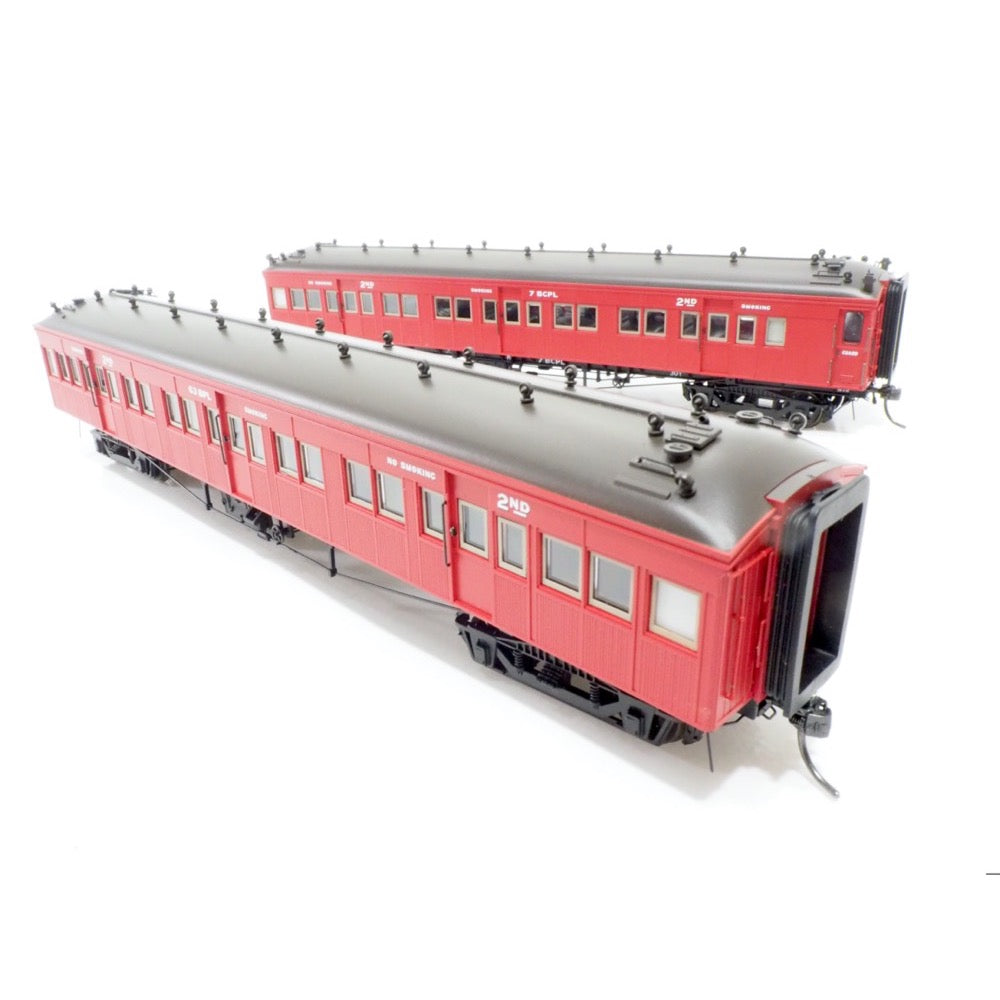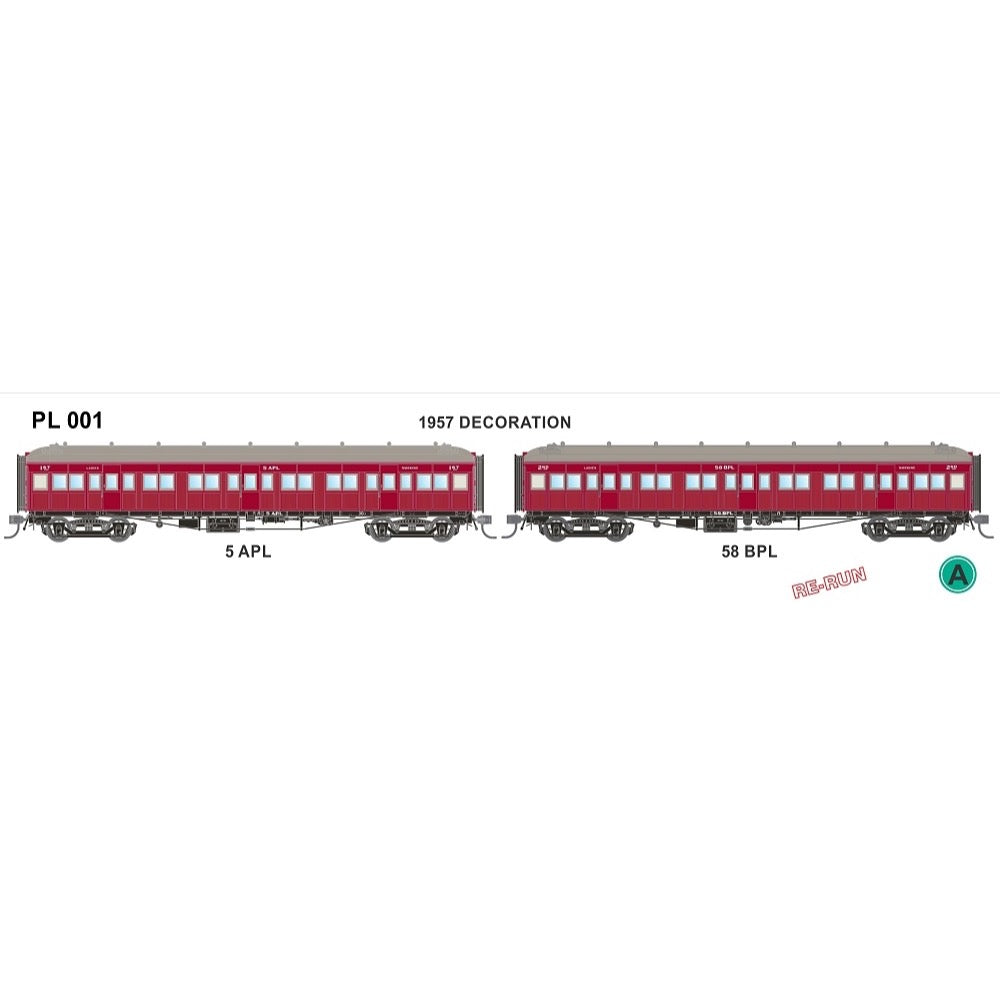
SDS Models PL001 HO VR BPL Coaches VR 5APL 58BPL Smooth Side 2 Car Set
104.00
$
<p>The original Austrains PL series of carriages have been upgraded. The Austrains NEO series are based around the same 59'9" design as the original models.</p>
<p>We've retooled the sides to reflect another style of doorway synonymous to this type of carriage, the sliding door. At the same time we took the opportunity to remove the faux raised screw heads of the original model along the raised beading and letter board area of the car body.</p>
<p>We have also improved the dimensionally accuracy of the roof mounted torpedo ventilators, made some small changes to the appearance of the bogies and improved the interior seat representation.</p>
<p>Lastly, we have introduced an additional width underframe, with centered handbrake wheel position. This provides us with a opportunity to model specific car numbers that match the prototype and offer all new car numbers. Three distinct eras of operation are offered, all with specific annotations on the car sides.</p>
<p>The APL and BCPL cars use the original 8'0" wide style underframe and the BPL cars ride on a new 7'6" style of underframe with centered handbrake wheel.</p>
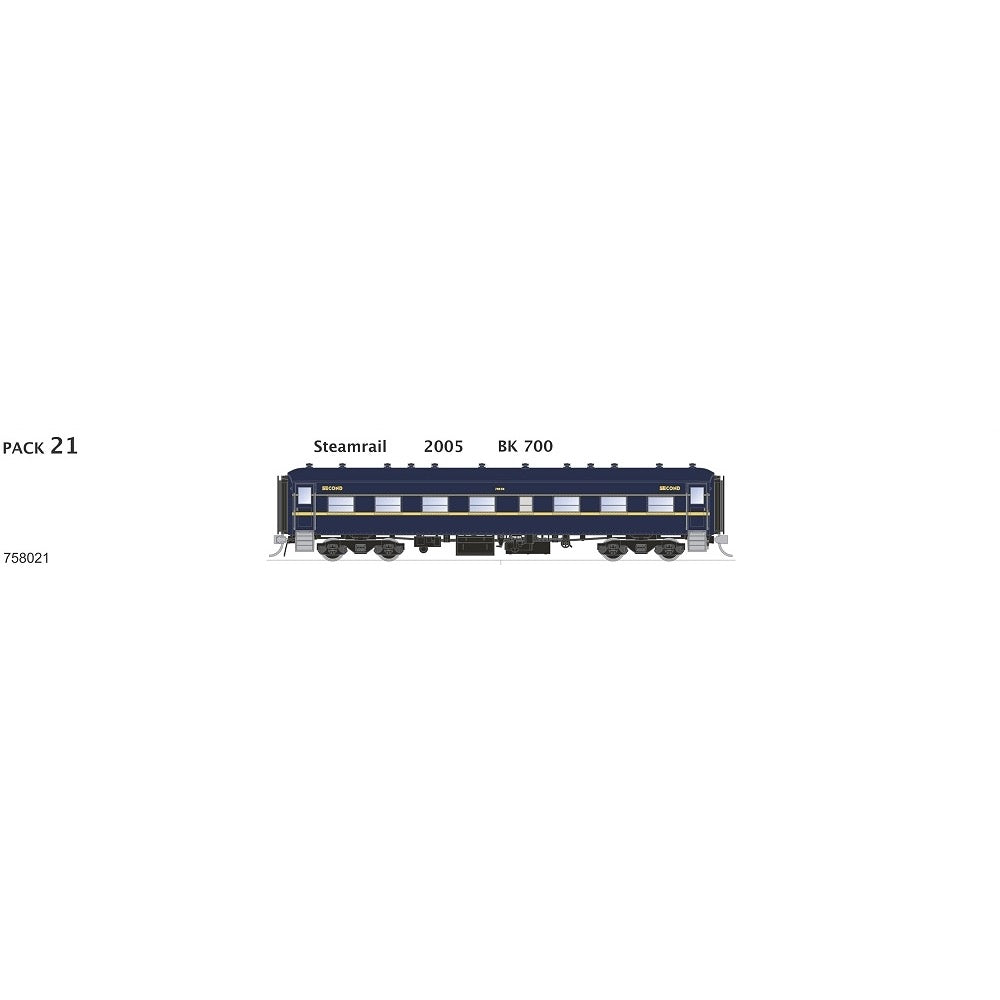
SDS Models 758021 HO SAR 700 Class Passenger Cars Pack 16 Steamrail BK700
62.00
$
<p>The South Australian Railways introduced 36 steel bodied country passenger cars between 1936 and 1941. Of these cars the last 24 built, entered service in 1940/41. They were all of a similar external appearance and the same overall length.</p>
<p>16 were coded 700 to 715, these were Second class centre aisle cars. 4 were coded 750 to 753, these were Composite class centre aisle cars. 4 were coded 780 to 783, these First class centre aisle cars.</p>
<p>Originally introduced with frameless full drop windows, they were progressively replaced with half drop chrome plated framed windows from the mid 1950s through to the very early 1960s.</p>
<p>Introduced in Hawthorn green and cream with black roofs up until the mid to late 1960s, when they were progressively repainted into Regal red and Silver to match the newer country stock.</p>
<p>In the early 1970s 4 cars were transferred to standard gauge to work between Broken Hill and Peterborough. Later in the early 1980s several cars were hired to Victorian Railways.</p>
<p>Many 700 series cars also saw service with West Coast Railway in Victoria, Steam Ranger in South Australia, North Rivers Railroad with Ritz Rail in Northern NSW.</p>
<h3>Features</h3>
<ul>
<li>Highly detailed Ready-to-Run 1/87 Scale HO gauge model </li>
<li>18” Minimum radius recommended</li>
<li>Precisely tooled plastic body (ABS)</li>
<li>Genuine Kadee scale head whisker coupler </li>
<li>Separately applied handrails and detail parts</li>
<li>Two body style options: Original 8 vent roof and later 13 vent roof</li>
<li>Two window style options: Original Beclawat frameless full drop window and later Wahner framed half drop window</li>
<li>Three full interior options for each class and with appropriate seat covering colour</li>
</ul>
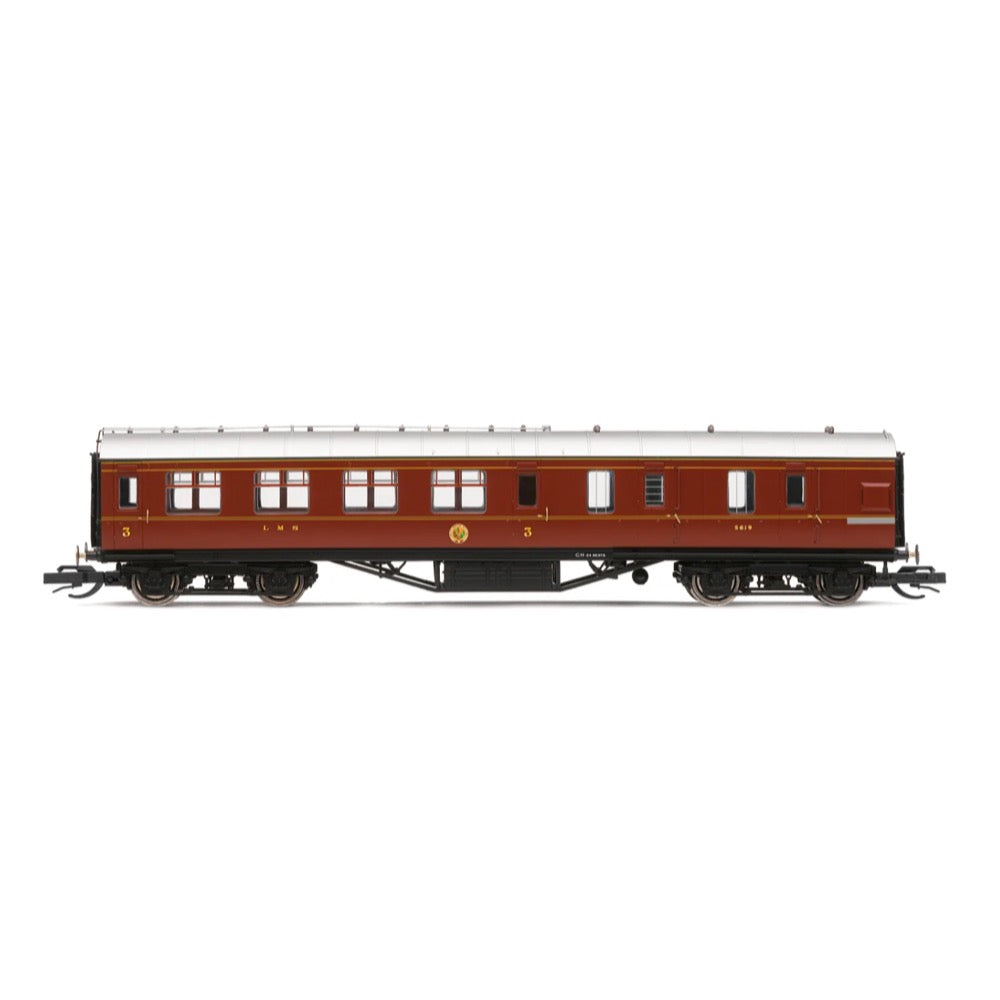
Hornby TT4009 TT LMS 57 Brake Third 5619
27.00
$
<p>At the start of the 1930s the LMS abandoned the ‘Small Engine Policy that it had inherited from one of its largest predecessors, the Midland Railway. The abandoning of this policy led to some of the most famous Stanier and LMS designs such as the Jubilee, Black 5 and Duchess classes. To accompany this shift in ethos, new coaches were constructed for the LMS, with the 57’ coaches being built between 1931 and 1932.</p><p>These new coaches were steel clad, the first such for the LMS and had seating for 56, 300 such examples were built. In LMS service these coaches were painted in their striking maroon livery with LMS insignia adorning the side. The coaches, being relatively new at the time of nationalisation lasted well into the swansong days of BR, appearing in both its carmine and cream livery and later BR Maroon when BR decided to shift aesthetics back to regional recognition.</p><h3>Specifications</h3><ul>
<li>Item Length - Without Packaging (cm): 14.4</li>
<li>Item Height - Without Packaging (cm): 3</li>
<li>Item Width - Without Packaging (cm): 2.2</li>
<li>Item Weight - Without Packaging: 0.04</li>
<li>Item Scale: 1:120 Scale</li>
<li>Finish: Painted</li>
<li>Colour: Maroon</li>
<li>Gauge: TT</li>
<li>Operator: LMS</li>
<li>Designer: Sir William Stanier</li>
<li>Livery: LMS Maroon</li>
<li>Minimum Curve (mm): Radius 3</li>
<li>Number of Parts: 1</li>
</ul>
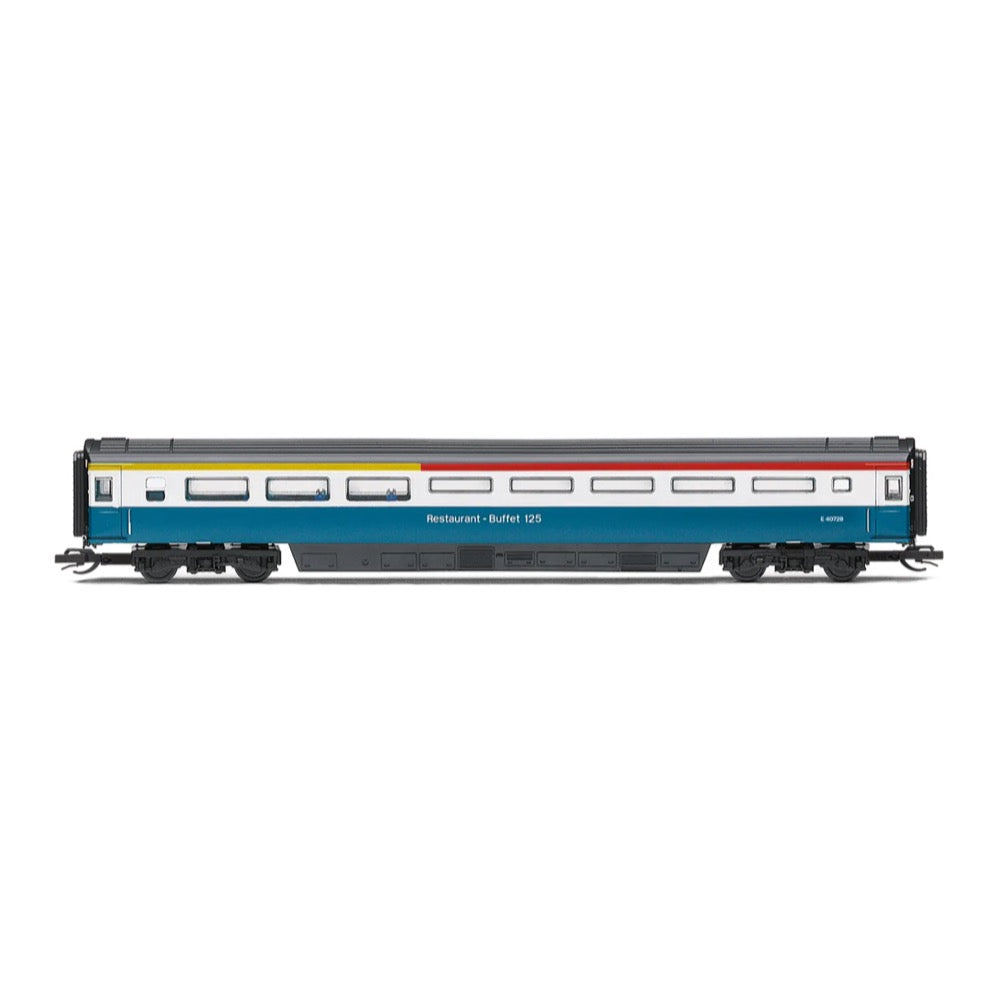
Hornby TT4026 TT BR Intercity Mk3 Restaurant/Buffet E40728
27.00
$
<p>In-order to allow running at 125 mph on Britain's Victorian era railways, new rolling stock was needed by British Railways. Significant improvements over the Mk2 included new secondary air suspension between the bogies and the coach body as well as aerodynamic skirting on the underframe.</p><p>Mk3 coaches are 75ft (23m) long, enabling far greater capacity than older coaches. Mk3 coaches also incorporate disk brakes and wheel slip protection enabling faster deceleration. The first Mk3 coaches to be delivered were used as part of the HST prototype along with the two Class 41 diesel power cars in 1972. Mk3 coaches entered service in 1975 along with the Class 43 forming the iconic InterCity 125 trainset.</p><p>After the HST Mk3 coach variant was introduced, further Mk3 coaches were introduced to the West Coast Mainline for use as part of locomotive hauled trains. Whilst Mk3 stock is standard for HST units, the standard locomotive hauled stock is Mk3a. Mk3a stock differs from Mk3 stock due to the inclusion of buffers as well as a different electrical system that uses motor generator units in each coach to power air conditioning and other ancillaries Mk3a stock was built until 1984, before 3B stock with improved seating and lighting was built from 1985 to 1988.</p><p>The Mark 3 coaches were introduced into service with the Class 43s as the Intercity 125 service. This top flight service was dressed in a variation of BR Blue with a grey window surround. The Class 43s would be painted in a complimentary colour scheme with yellow noses for safety reasons. The Mark 3 coaches would continue in service in this scheme until the late 1990s. In preservation, some of these coaches have had this distinctive livery reapplied.</p><h3>Specifications</h3><ul>
<li>Item Length - Without Packaging (cm): 19</li>
<li>Item Height - Without Packaging (cm): 2.2</li>
<li>Item Width - Without Packaging (cm): 2</li>
<li>Item Weight - Without Packaging: 0.05</li>
<li>Item Scale: 1:120 Scale</li>
<li>Finish: Painted</li>
<li>Colour: Multiple</li>
<li>Gauge: TT</li>
<li>Operator: BR</li>
<li>Designer: BR</li>
<li>Livery: BR Blue and Grey</li>
<li>Minimum Curve (mm): Radius 1</li>
<li>Number of Parts: 1</li>
</ul>
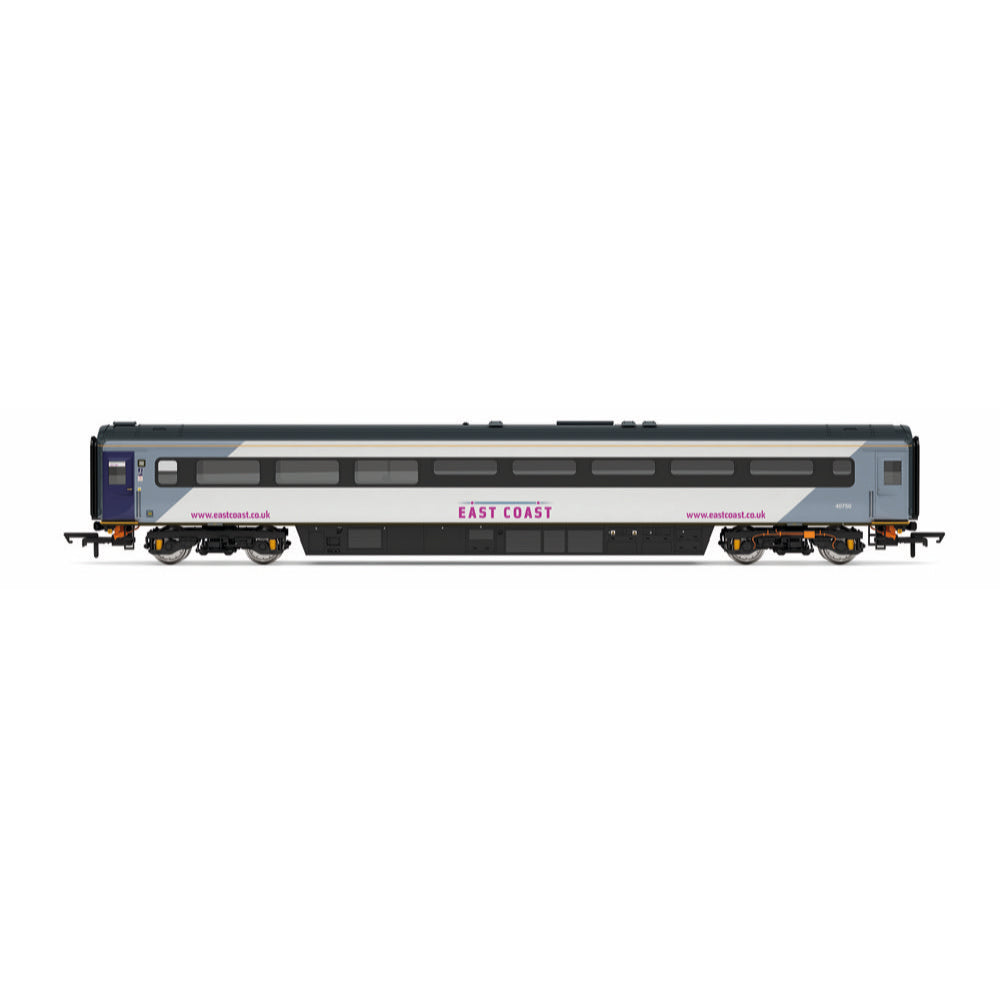
Hornby R40246 OO East Coast Mk3 Trailer Restaurant First Buffet 40750
32.00
$
<p>In-order to allow running at 125 mph on Britain's railways, new rolling stock was needed by British Railways. Significant improvements over the Mk2 included new secondary air suspension between the bogies and the coach body as well as aerodynamic skirting on the underframe. Mk3 coaches are 75ft (23m) long enabling far greater capacity than older coaches. Mk3 coaches also incorporate disk brakes and wheel slip protection enabling faster deceleration.</p>
<p>The first Mk3 coaches to be delivered were used as part of the HST prototype along with the two Class 41 diesel power cars in 1972. Mk3 coaches entered service in 1975 along with the Class 43 forming the iconic InterCity 125 trainset.</p>
<p>Following a period of unprofitable operations, the InterCity East Coast franchise passed from NXEC to East Coast, an operator owned by the Department for Transport. From the beginning of East Coast's operations, it was made clear that it was the DfT's intention was that the franchise be retendered in future years. To this end East Coast soon adopted a deliberately plain livery that would be easy for a new operator to re-brand. The franchise eventually passed to Virgin Trains East Coast in March 2015.</p>
<h4>Includes</h4>
<ul>
<li>1x Rolling stock Coach</li>
</ul>
<h4>Technical Specifications</h4>
<div>
<ul>
<li>Item Length - Without Packaging (cm): 30.3</li>
<li>Item Height - Without Packaging (cm): 5</li>
<li>Item Width - Without Packaging (cm): 3.5</li>
<li>Item Weight - Without Packaging: 0.19</li>
<li>Item Scale: 1:76 Scale 00 Gauge</li>
<li>Finish: Painted</li>
<li>Colour: Grey</li>
<li>Operator: East Coast</li>
<li>Designer: BREL</li>
<li>Livery: East Coast Grey</li>
<li>Minimum Curve (mm): Radius 2</li>
<li>Number of Parts: 1</li>
</ul>
</div>
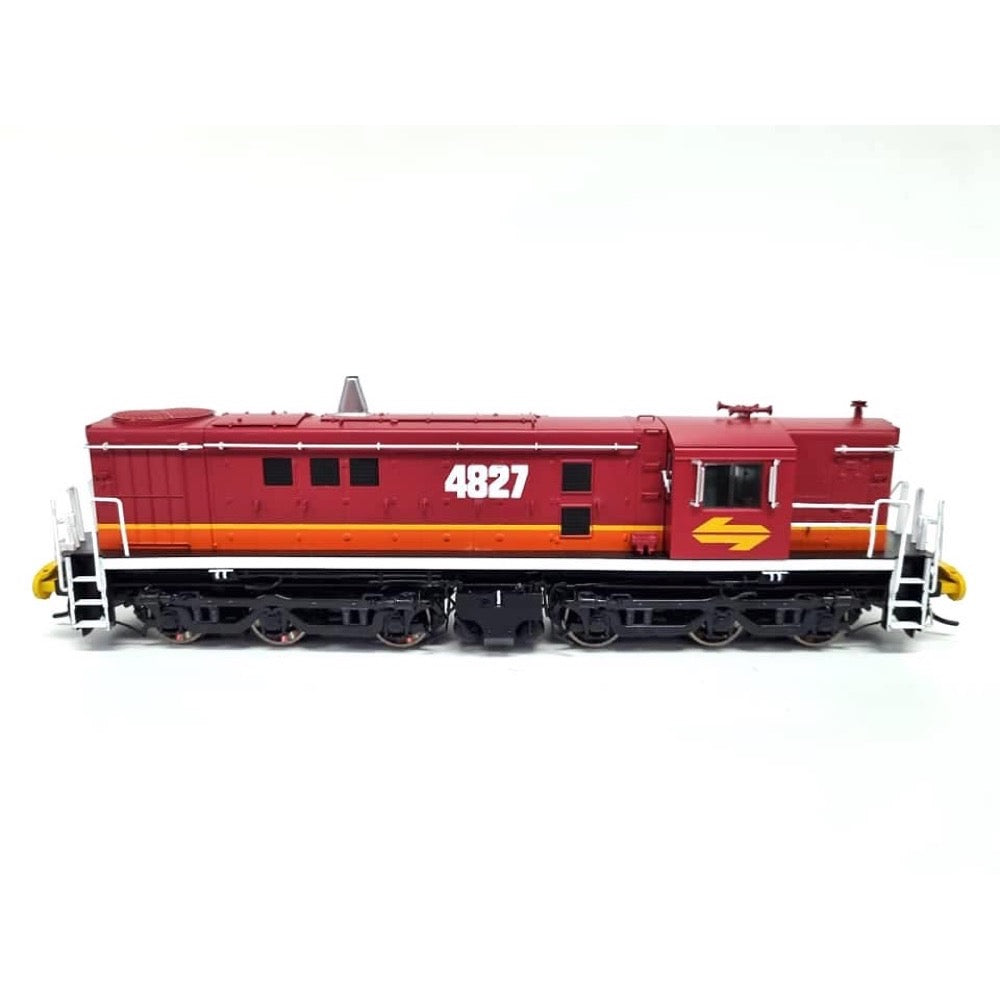
Powerline PR481A-2-27 48 Class Mark 1 SRA Candy 4827 DCC Sound Fitted
181.00
$
<p>The 48 Class diesel-electric locomotives were built by A E Goodwin (Auburn) for the New South Wales Government Railways between 1959 and 1970. Once the most ubiquitous locomotive in New South Wales, Australia, they are based on Alco frames and prime movers using General Electric electrical equipment.</p>
<h3>Features</h3>
<ul>
<li>HO-Scale</li>
<li>DCC-Ready (Requires a 21-Pin DCC Decoder)</li>
<li>Sound-Speaker Fitted</li>
<li>Revised Tooling</li>
<li>Twin-Brass Flywheels</li>
<li>All-Wheel Pickup</li>
<li>Injection Moulded Plastic</li>
<li>Five-Pole Motor</li>
<li>Directional Lighting</li>
<li>Brass-Etched Details</li>
<li>NMRA Wheel Profiles</li>
</ul>

Hornby R4816A SR Maunsell Kitchen/Dining First 7865 - Era 3
46.00
$
<p>Following the introduction and demand of dining-orientated passenger coaches, the SR, Maunsell Kitchen/Dining First, 7865 - Era 3 also joined the increasing list of these types of coaches. Designed by Richard Maunsell and featuring an olive green livery in addition to the windows that detail the coach's interior.</p>
<p>This subtle detail brings out the very best of the 'Kitchen/Dining First, S7858S' history and, as a result, is the perfect option for any new collection addition. The coach measurements are 243mm.</p>
<h3>Specifications</h3>
<ul>
<li>Item Length - Without Packaging (cm): 31</li>
<li>Item Height - Without Packaging (cm): 4.5</li>
<li>Item Width - Without Packaging (cm): 9.1</li>
<li>Item Weight - Without Packaging: 0.24</li>
<li>Item Scale: 1:76 Scale 00 Gauge</li>
<li>License: No</li>
<li>Finish: Painted</li>
<li>Colour: SR Olive</li>
<li>Gauge: OO</li>
<li>Operator: SR</li>
<li>Designer: Richard Maunsell</li>
<li>Livery: Olive Green</li>
<li>Number of Parts: 1</li>
</ul>

Steam Era Models R10 HO UP Bogie Louvred Van Kit
13.00
$
<p>During the 1930s there was a program to fit the six wheel U vans with automatic couplers and as part of the process they were converted to four wheel underframes. In order to retain the capability of operation as luggage vans on passenger trains, sixty vans were rebuilt with bogie underframes utilising 6'0' wheelbase swing motion diamond frame bogies and coded UB. Lamp irons were added to the comers of the van as well as to the headstocks at each end, with provision made by the simple expedient of hammering the louvres flat in the general area. UB vans remained on diamond frame bogies until 1958-1960 when there was a program to change to bar frame bogies. A further change was made to transfer many of the UB vans to 40 ton cast steel bogies in 1973-1975. They were largely withdrawn and scrapped in the mid to late 1970s.</p>
<p>Problems with the ride quality of the diamond frame bogies led to a directive in 1949 that UB vans were not to be attached to passenger trains where the speed would exceed 40mph, effectively limiting the vans to goods train use. This loss of luggage van capacity led to eight vans being fitted with TT30 bogies in 1955/56, allowing them to be used on passenger trains once more. These vans were also fitted with locomotive style folding tail discs at each end and a large P was stencilled on the upper right side / upper left end corners to denote suitability for use on passenger trains and the van code was changed to UP. The UP vans were painted with passenger car red enamel in 1958/59, but the arrival of the larger capacity VP vans spell the end of the UP vans and they were placed back on freight bogies in late 1960/early 1961, reverting to UB code and goods train operation.</p>
<p>This kit includes wide doors and a corrugated roof, so it is representative of vans numbered 1-41, 43, 44 and 50. A more detailed history of these vans can be found in the October 2000 Australian Model Railway Magazine.</p>
<h3>Features</h3>
<ul>
<li>
<p>Available in a range of Victorian Railways prototypes of wagons and carriages, in HO scale only.</p>
</li>
<li>
<p>R series kits are injection moulded from polystyrene and RE series kits are etched brass with lost wax brass castings. All kits include instructions, decals and wheels/bogies as appropriate.</p>
</li>
<li>
<p>Kits do NOT include paints, couplers and in many cases etched detail parts, which are all available separately.</p>
</li>
<li>
<p>Wheels to NMRA RP25 code 99 profile and HO gauge, from the standard SEM range of wheelsets, are included.</p>
</li>
<li>
<p>Bogie vehicles are supplied with appropriate bogies and wheels from the standard SEM range.</p>
</li>
<li>
<p>Kits R6, R12, R20 and R21 require some kitbashing skills to complete.</p>
</li>
</ul>
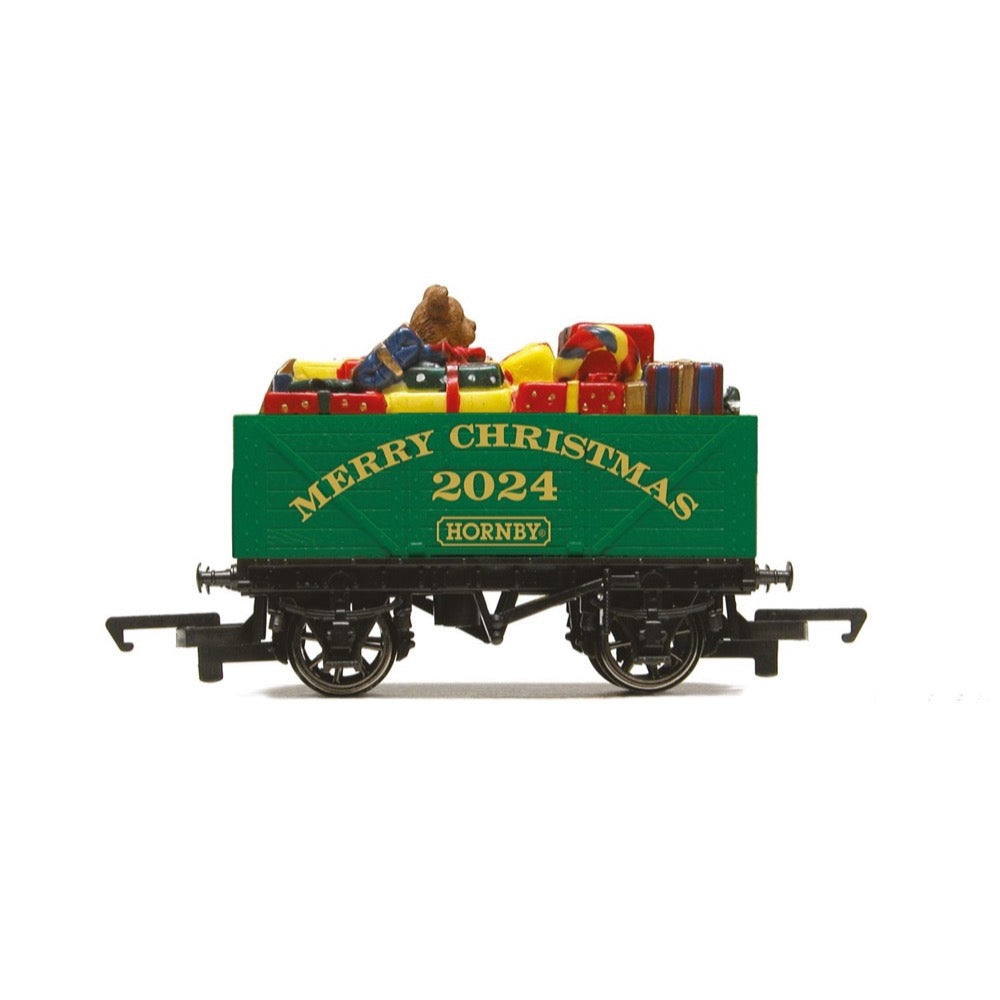
Hornby R60262 Christmas Wagon 2024
22.00
$
<p>Get into the festive spirit and treat yourself with this 2024 Hornby Christmas wagon. Featuring a vivid green livery, this wagon gives Christmas vibes and looks amazing underneath your tree. It is also filled to the brim with wonderful presents. Celebrate the holidays by adding this wagon to your model railway collection.</p>
<h4>Includes</h4>
<ul>
<li>1x Rolling Stock Wagon</li>
</ul>
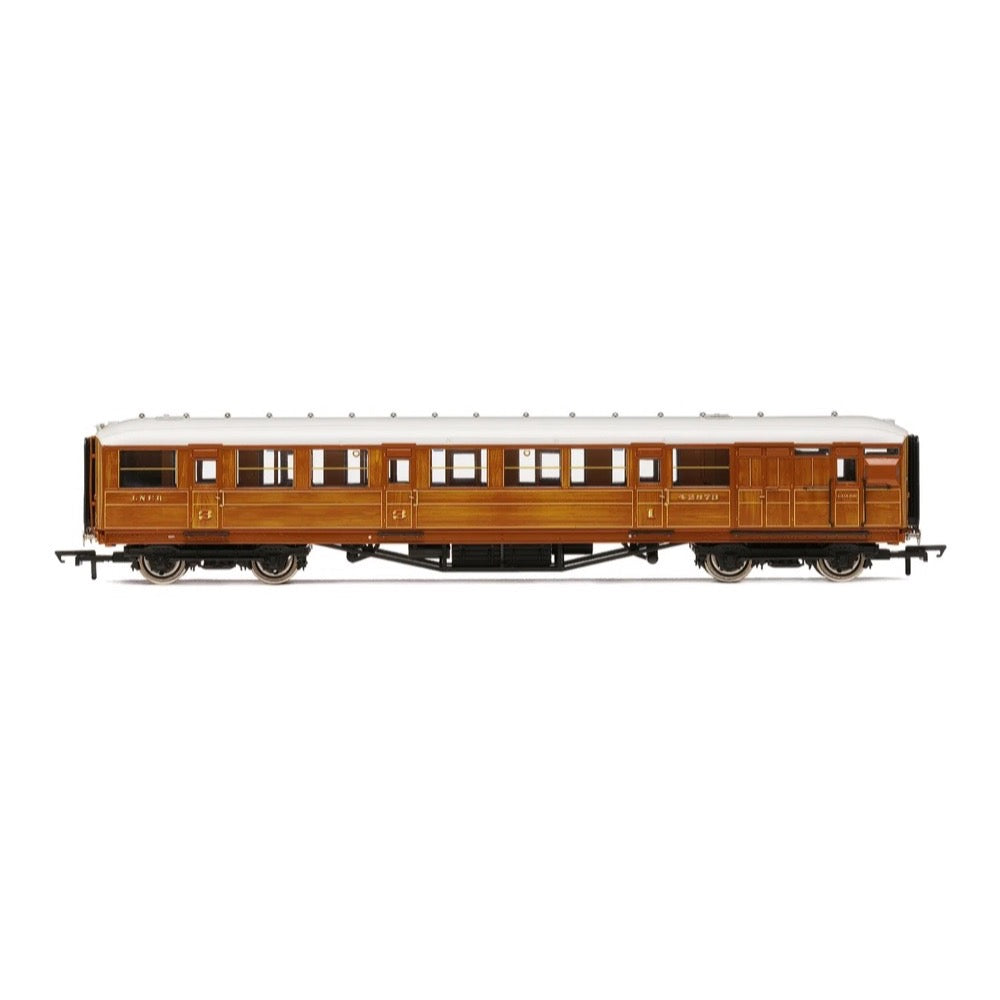
Hornby R4826A OO LNER 616 Gresley Corridor Composite 42873 Era 3
71.00
$
<p>Despite losing the crown of the largest of the 'Big Four' railway companies to its main rival the LMS, the LNER is notable for having some of the most iconic designs of locomotive and coaches ever devised. Often overlooked due to the prowess of their locomotives, the coaches of the LNER were some of the most resplendent coaches for their period, rivalled only by the privately owned Pullman Coaches.</p>
<p>With stylings rooted in the rolling stock of the large constituent GNR, many LNER coaches were made from panelled teak giving the coaches a unique appearance. Unlike other coach designs of the same era the LNER did not paint their coaches choosing instead to simply apply wax varnish to the exterior and interior wood resulting in the rich natural tones of the wood shining under any light.<br>Represented in 1:76 scale, these coaches feature fully detailed interiors, an accurate representation of the teak wood panelling and metal wheels on each bogie.</p>
<h3>Specification</h3>
<ul>
<li>Item Length - Without Packaging (cm): 24.6</li>
<li>Item Height - Without Packaging (cm): 5</li>
<li>Item Width - Without Packaging (cm): 3.5</li>
<li>Item Weight - Without Packaging: 0.15</li>
<li>Item Scale: 1:76 Scale 00 Gauge</li>
<li>Finish: Painted</li>
<li>Colour: Teak</li>
<li>Gauge: OO</li>
<li>Operator: LNER</li>
<li>Designer: Sir Nigel Gresley</li>
<li>Livery: LNER Teak</li>
<li>Minimum Curve (mm): Radius 2</li>
<li>Number of Parts: 1</li>
<li>Buffer Type: Sprung Metal Buffers</li>
<li>Coupling Type: NEM Tension Lock</li>
</ul>



